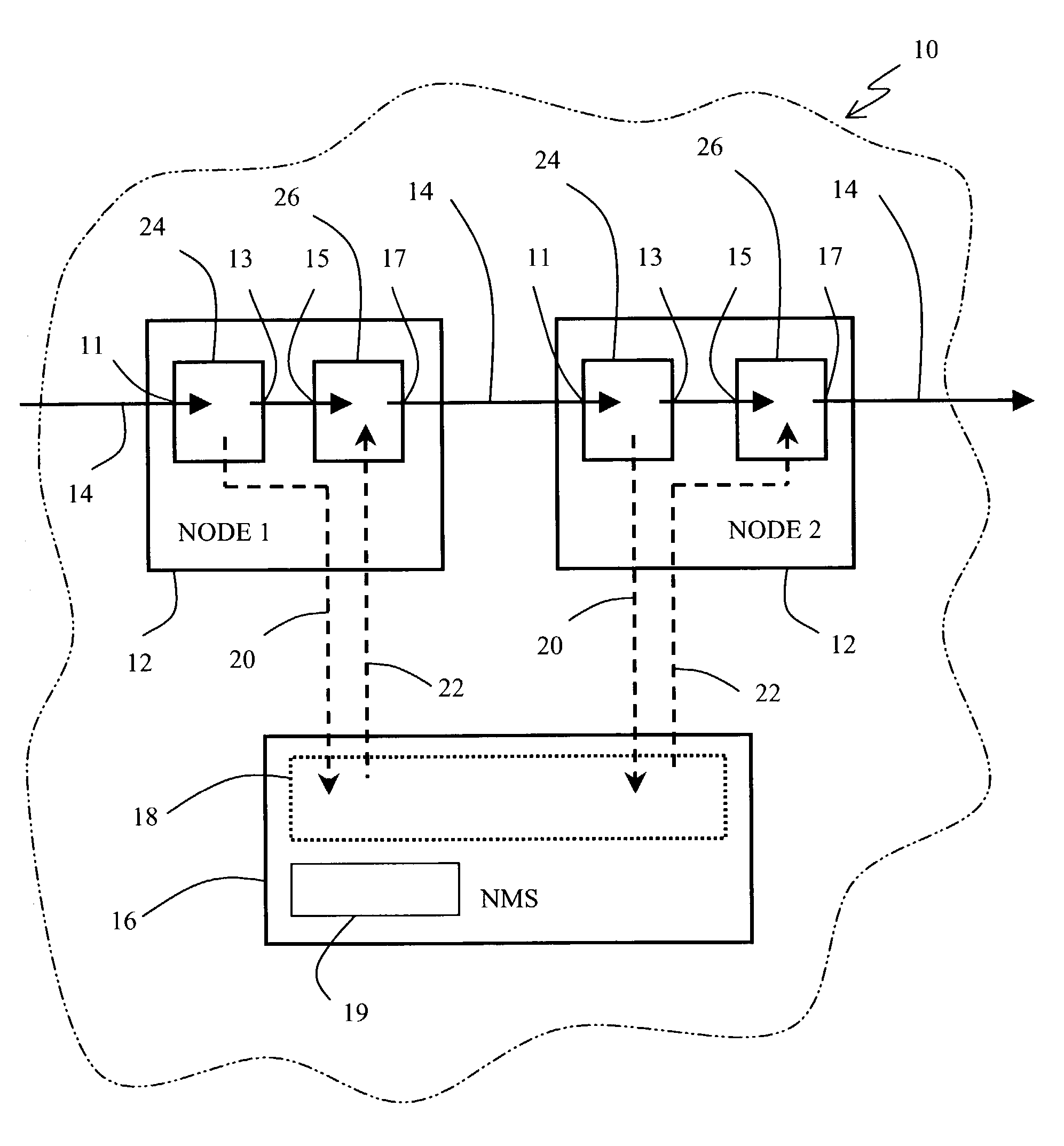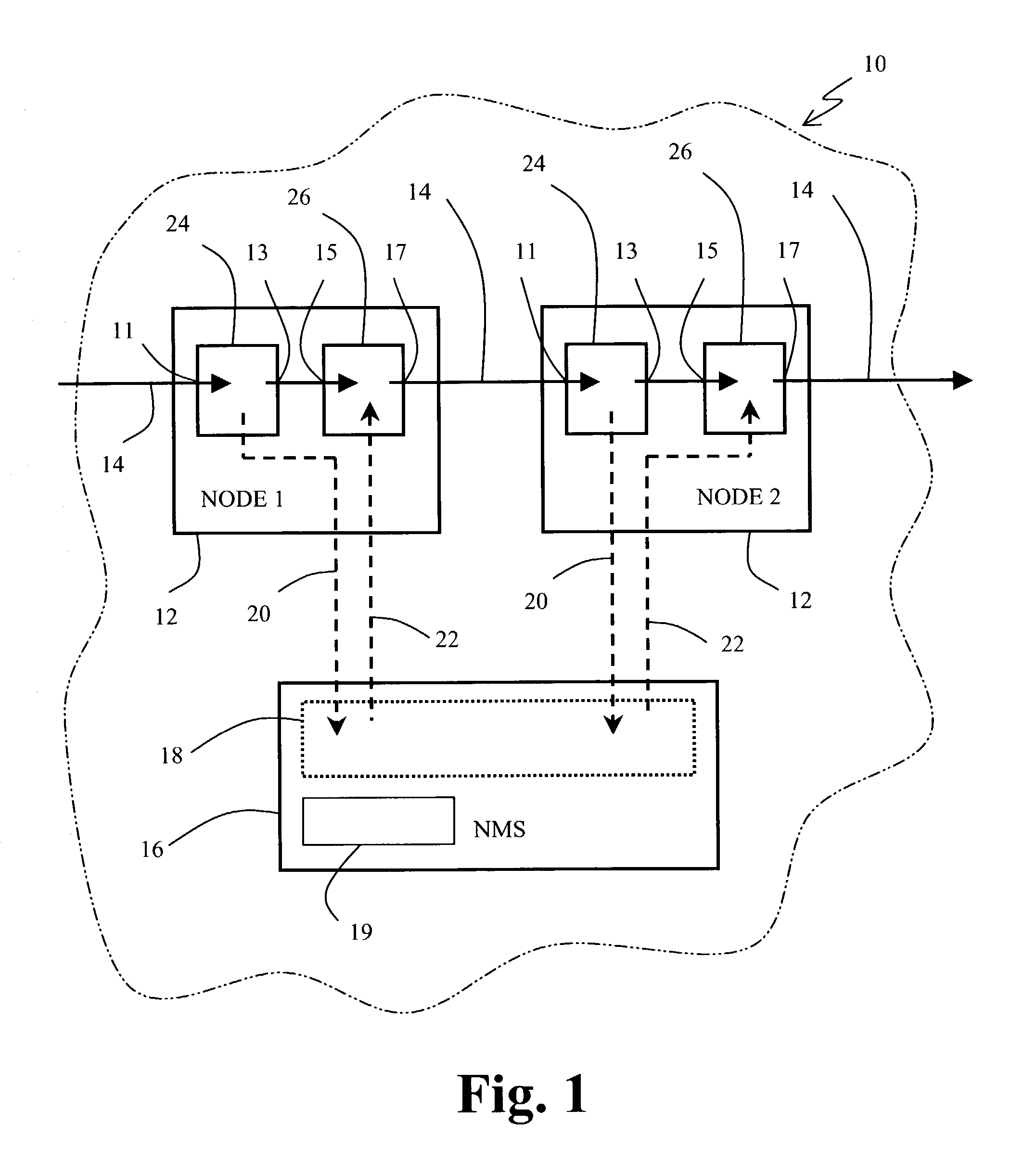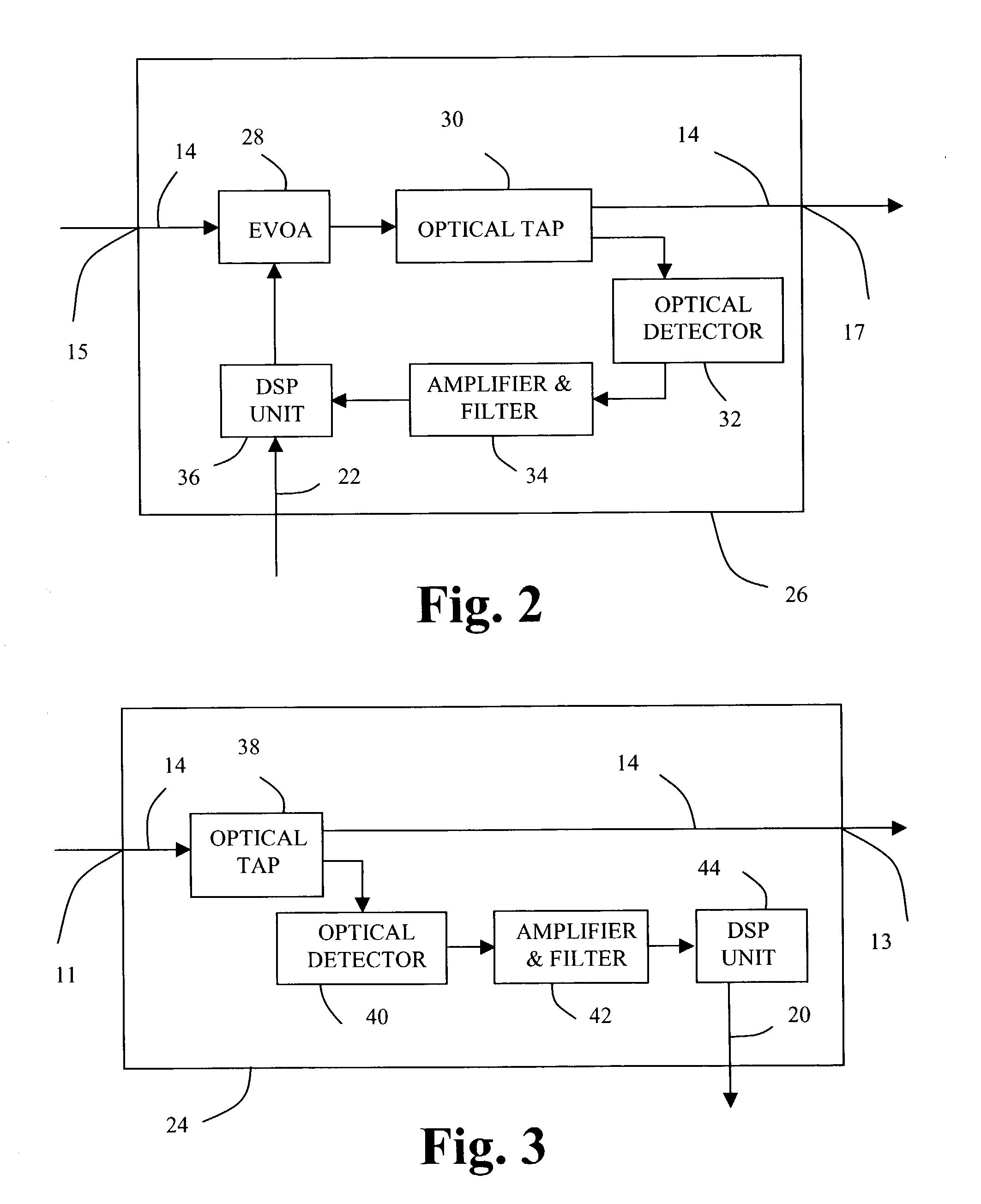Method and system for identification of channels in an optical network
a technology of optical network and channel identification, applied in the field of optical network, can solve the problems of not being suitable for large networks and the increasing difficulty of network management, and achieve the effect of cost-effective and reliabl
- Summary
- Abstract
- Description
- Claims
- Application Information
AI Technical Summary
Benefits of technology
Problems solved by technology
Method used
Image
Examples
first embodiment
[0047]FIG. 4b illustrates partitioning of tones in the tonespace used in the method of identification of channels according to the invention. The tonespace 46 of 1600 tones comprises M=32 blocks, each block including N=50 tones and being used for identification of 32 channels in the network (channel 1 to channel 32). The first block, labelled 48 in FIG. 4, comprises N=50 tones, where the first tone in the first block is labelled 56, the second tone labelled 58, the third tone labelled 60, tones 4 to 49 are indicated by a dotted line and labelled 62, and the last (50th) tone in the first block is labelled 64. Similarly, the second block of N=50 tones is labelled 50, where the first tone in the second block is labelled 66, the second tone labelled 68, the third tone labelled 70, the fourth to the 49th tones are indicated by a dotted line and labelled 71, and the last (50th) tone in the second block is labelled 72. Blocks 3 to block 31 are indicated by a dotted line and labelled 52. Th...
second embodiment
[0058]In the method of identification of channels in an optical network according to the invention as illustrated in FIG. 4c, the tonespace 46 of 1600 tones is also partitioned into M=32 blocks of N=50 tones, the tones in each block being used for the identification of one of the M=32 channels in the network. Similar elements in FIGS. 4b and 4c are labelled by the same reference numerals, with the addition of the letter “a” in FIG. 4c. In this method, the tones in each block are chosen as follows. In the first block 48a, the first tone 56a is the first tone in the tonespace, or tone #1, which is equivalent to a frequency of 48000 Hz. The second tone 58a is the second tone in the tonespace, or tone #2, the third tone 60a is tone #3, and so on, and the last tone 60a in the first block is tone #50. The tones in the second block 50a are the next 50 tones in the tonespace, namely tones #51 to tone #100, and so on, and the tones in the last (Mth) block 54a are the last 50 tones in the ton...
third embodiment
[0065]Channel signatures for the channels are chosen by selecting pairs in the following manner. The first tone in the pair is chosen from one of the blocks in the first segment, the block in the first segment being used for identifying the channel in question only. The second tone in the pair is chosen from the block in the second segment with the same ordinal number as the block used to choose the first tone in the pair, the block in the second segment being used for identifying the channel in question only. For example, if the first tone in the pair is selected from block 88, then the second tone in the pair is chosen from block 94, or alternatively, if the first tone in the pair is chosen from the block 90, then the second tone in the pair is chosen from the block 96. The number of tone pairs available to identify each channel is 625. Table 5 illustrates examples of channel signatures used to identify channels one to three and channel 32, according to the described allocation sc...
PUM
 Login to View More
Login to View More Abstract
Description
Claims
Application Information
 Login to View More
Login to View More - R&D
- Intellectual Property
- Life Sciences
- Materials
- Tech Scout
- Unparalleled Data Quality
- Higher Quality Content
- 60% Fewer Hallucinations
Browse by: Latest US Patents, China's latest patents, Technical Efficacy Thesaurus, Application Domain, Technology Topic, Popular Technical Reports.
© 2025 PatSnap. All rights reserved.Legal|Privacy policy|Modern Slavery Act Transparency Statement|Sitemap|About US| Contact US: help@patsnap.com



